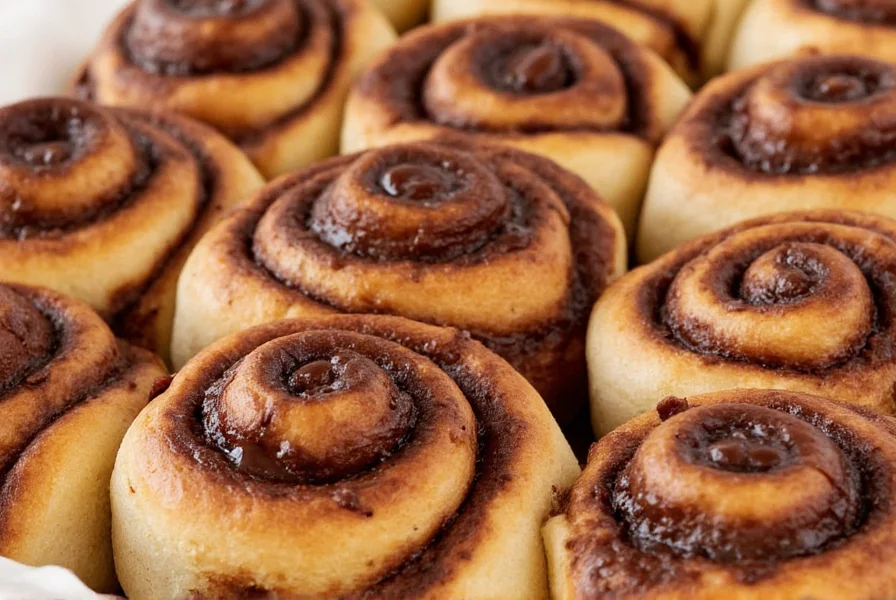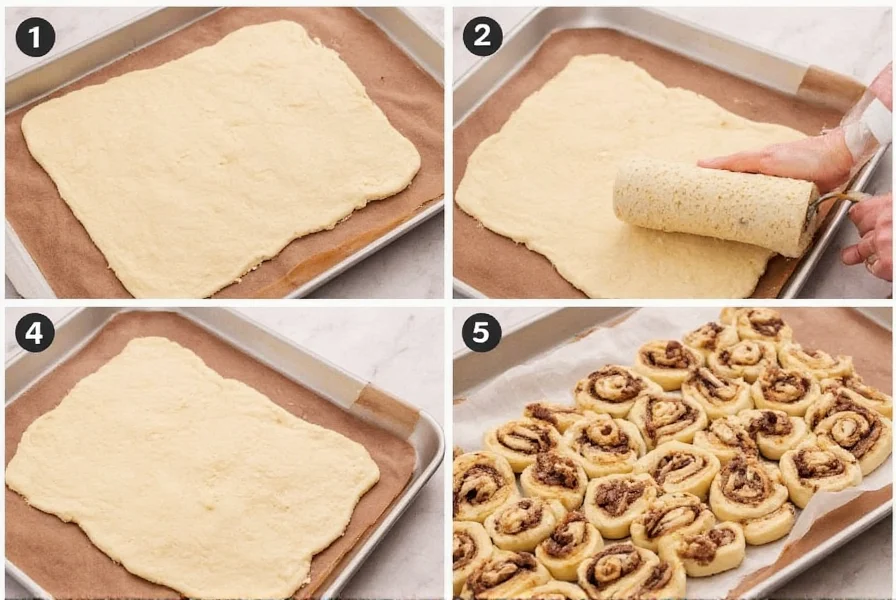The Perfect Harmony of Chocolate and Cinnamon Rolls
Chocolate and cinnamon rolls represent a beloved evolution of the traditional cinnamon roll, merging two universally adored flavors into one irresistible pastry. While classic cinnamon rolls rely solely on the warm spice of cinnamon and sugar, the chocolate variation introduces a rich, complex element that elevates the entire experience. This fusion works because both ingredients share complementary flavor profiles—cinnamon's warmth enhances chocolate's depth, while chocolate's bitterness balances cinnamon's sweetness.

Understanding the Key Components
Creating exceptional chocolate cinnamon rolls requires attention to three critical elements: the dough, the filling, and the icing. Each component must work in harmony to deliver the perfect balance of flavors and textures.
Dough Considerations
The foundation of any great cinnamon roll is a light, tender, pull-apart dough. For chocolate variations, bakers have two primary approaches:
| Chocolate Integration Method | Texture Result | Flavor Impact |
|---|---|---|
| Chocolate swirl in filling only | Traditional soft roll texture | Distinct chocolate-cinnamon layers |
| Cocoa powder in dough | Slightly denser, more bread-like | Subtle chocolate throughout |
| Chocolate chips in dough | Irregular texture with melty pockets | Intense chocolate bursts |
Professional bakers typically recommend incorporating chocolate primarily in the filling rather than the dough itself to maintain the signature light texture of traditional cinnamon rolls while still delivering pronounced chocolate flavor.
Mastering the Chocolate Cinnamon Filling
The filling represents where most chocolate cinnamon roll recipes differentiate themselves. A standard cinnamon-sugar mixture gets transformed with the addition of quality chocolate. The most successful homemade chocolate cinnamon rolls recipe techniques include:
- Chocolate paste method: Melt high-quality chocolate with butter to create a smooth, spreadable paste that won't tear the dough
- Chocolate-cinnamon sugar blend: Mix fine chocolate shavings with cinnamon and sugar for even distribution
- Layered approach: Alternate cinnamon sugar with thin chocolate ganache for distinct flavor layers
When developing your chocolate cinnamon roll baking tips, remember that chocolate quality matters significantly. Dark chocolate with 60-70% cocoa content provides the ideal balance—sweet enough to complement the cinnamon without becoming cloying. Milk chocolate often makes the rolls too sweet, while pure dark chocolate can overwhelm the cinnamon.
Step-by-Step Chocolate Cinnamon Roll Preparation
Creating perfect chocolate cinnamon rolls requires careful attention to timing and temperature. Follow these professional how to make chocolate cinnamon rolls from scratch guidelines:
- Dough preparation: Mix yeast, warm milk (110°F), sugar, and a pinch of flour; let sit until foamy (5-10 minutes)
- Combine ingredients: Add melted butter, eggs, salt, and gradually incorporate flour until a soft dough forms
- First rise: Knead until smooth and elastic (about 8 minutes), then let rise in a greased bowl until doubled (1-1.5 hours)
- Prepare filling: Mix 1 cup brown sugar, 2 tbsp cinnamon, and 8 oz melted dark chocolate with 4 tbsp softened butter
- Roll and fill: Roll dough into a 16x20 inch rectangle, spread filling evenly, then roll tightly
- Second rise: Cut into 12 rolls, place in greased pan, and let rise until puffy (45-60 minutes)
- Bake: At 350°F for 22-28 minutes until golden brown and cooked through

Perfecting the Icing
While traditional cinnamon rolls feature cream cheese icing, chocolate variations offer several sophisticated options. The chocolate cinnamon roll icing recipe that delivers optimal balance combines:
- Chocolate cream cheese icing: 8 oz cream cheese, 4 oz melted dark chocolate, 1 cup powdered sugar, 2 tbsp milk
- Vanilla-chocolate drizzle: Half vanilla glaze, half chocolate glaze swirled together
- Espresso chocolate icing: Adds depth that complements both chocolate and cinnamon
Avoid overly sweet icings that mask the nuanced chocolate-cinnamon relationship. The ideal icing should enhance, not dominate, the pastry's primary flavors.
Troubleshooting Common Issues
Even experienced bakers encounter challenges with chocolate and cinnamon rolls. Here are solutions to frequent problems:
- Dense rolls: Usually caused by too much flour or insufficient rising time. Measure flour by weight (450-500g) rather than volume.
- Chocolate sinking to bottom: Chocolate filling too runny or applied to cold dough. Ensure dough is at room temperature before filling.
- Burnt bottoms: Use light-colored metal pans (not dark non-stick) and place on a baking sheet for even heat distribution.
- Dry texture: Overbaking or insufficient fat in dough. Check rolls at 20 minutes and remove when internal temperature reaches 190°F.
Variations for Different Dietary Needs
Modern chocolate cinnamon rolls recipe adaptations accommodate various dietary preferences without sacrificing flavor:
- Gluten-free chocolate cinnamon rolls: Use a quality 1:1 gluten-free flour blend with xanthan gum already included
- Vegan chocolate cinnamon rolls: Substitute butter with coconut oil, eggs with flax eggs, and use plant-based milk
- Reduced sugar version: Cut sugar in dough by 25% and use dark chocolate (70%+) to maintain flavor complexity
These adaptations require careful attention to hydration levels and rising times, as alternative ingredients often behave differently than traditional ones.
Serving and Storage Recommendations
For optimal enjoyment of your chocolate and cinnamon roll creation:
- Serving temperature: Enjoy warm (not hot) to allow flavors to fully develop—reheat briefly in oven rather than microwave
- Storage: Keep in airtight container at room temperature for 2 days or freeze for up to 3 months
- Reheating: Thaw frozen rolls overnight, then warm in 300°F oven for 8-10 minutes
Never refrigerate cinnamon rolls, as this accelerates staling. The moisture from refrigeration creates a tough, dry texture that ruins the delicate crumb structure.
Why Chocolate Cinnamon Rolls Captivate Bakers
The enduring popularity of chocolate cinnamon rolls stems from their perfect balance of familiar comfort and exciting novelty. They represent the ideal chocolate chip cinnamon rolls vs chocolate swirl compromise—offering the recognizable pull-apart quality of traditional rolls with the sophisticated depth of quality chocolate. When executed properly, they deliver a multisensory experience where the aroma of baking cinnamon and chocolate fills the kitchen, the visual appeal of golden rolls with visible chocolate swirls delights the eyes, and the complex flavor profile satisfies even discerning palates.
Can I use cocoa powder instead of melted chocolate in the filling?
Yes, but with limitations. For every ounce of melted chocolate, substitute 3 tablespoons cocoa powder plus 1 tablespoon melted butter. This works for basic recipes but lacks the rich mouthfeel of real chocolate. High-quality chocolate provides better flavor complexity and texture in the filling.
Why do my chocolate cinnamon rolls deflate when I cut them?
This typically happens when the dough has over-risen during the second proofing stage. The ideal proofing point is when rolls have increased by 50-75% and feel puffy but still spring back slightly when gently pressed. Over-proofed dough collapses when cut due to weakened gluten structure.
What's the best chocolate to use for cinnamon rolls?
Dark chocolate with 60-70% cocoa content provides the ideal balance for cinnamon rolls. This range offers sufficient chocolate intensity without overwhelming the cinnamon, and the moderate sugar content prevents excessive sweetness. Avoid chocolate with added flavors or inclusions that might interfere with the cinnamon pairing.
How can I prevent chocolate from sinking to the bottom of my rolls?
To prevent sinking, ensure your chocolate filling has the right consistency—thick enough to stay in place but spreadable. Cool melted chocolate slightly before spreading, and make sure your dough is at room temperature (not cold) when you apply the filling. A thin layer of softened butter on the dough before adding the chocolate mixture creates better adhesion.
Can I prepare chocolate cinnamon rolls ahead of time?
Yes, you can prepare them through the second rise, then refrigerate overnight. Cover tightly with plastic wrap. When ready to bake, remove from refrigerator 30 minutes before baking to take the chill off, then bake as directed. The cold dough will need 3-5 extra minutes in the oven.











 浙公网安备
33010002000092号
浙公网安备
33010002000092号 浙B2-20120091-4
浙B2-20120091-4